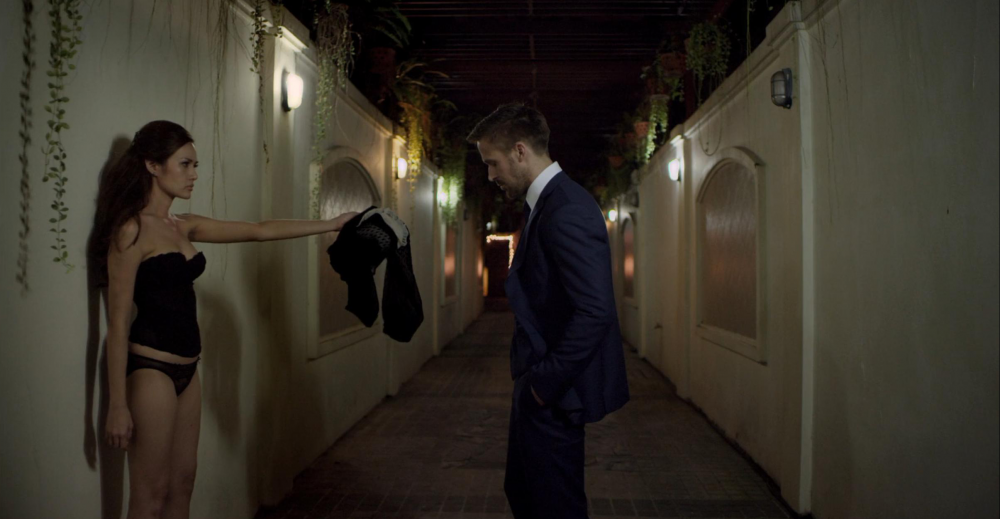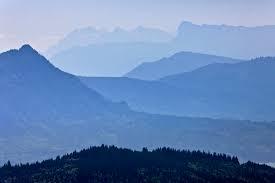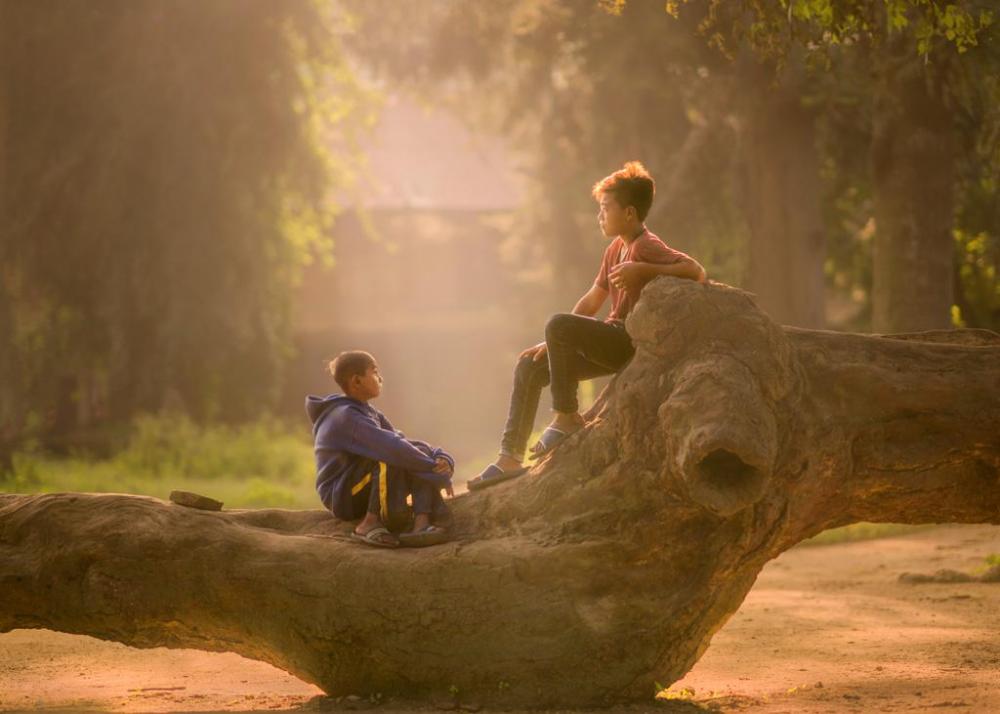Leaderboard
Popular Content
Showing content with the highest reputation on 07/05/2018 in all areas
-
Blackmagic Pocket Cinema Camera 4K
webrunner5 and 4 others reacted to Tone1k for a topic
I don't see a problem with the way this discussion has evolved. It has naturally evolved to what it is based on the lack of new info on the Pocket. Let's not be so militant that natural conversation be stifled for needing to start new threads for each and every little tangent that a conversation might go on. I see JB as a BMD ambassador so his input is highly valued here.5 points -

My Prototype Electronic Variable ND Filter
thephoenix and 3 others reacted to BTM_Pix for a topic
So... I've been messing around with making a new add on for my controller system and this is it in its embryonic (cardboard and electrical taped chassis) form. It has 3 dedicated keys on the controller for incrementing and decrementing in stops (it goes to about 95% total blackout) and a clear function. Though this is not a full clear as there is about a half stop of ND at the lowest position. The level of reduction is actually fully variable but for the implementation I'm after it makes more sense to control it in stops. As with the other functions, it can be recalled within one of the 8 one touch recall global presets along with exposure, white balance and picture settings. I've also incorporated an automatic aperture tracking function. This means that you set the exposure and ND level that you want at a given stop (say f8) and it will adjust the amount of ND up and down as the aperture changes to keep the exposure constant at any aperture. Right, thats the good news out of the way.... The bad news is that the surface area is going to need to be a lot bigger (these things are usually mounted at the back of the lens but I'm after a front mounting solution for flexibility) to work properly. Quite a bit bigger and unfortunately that will mean quite a lot more expensive. The question is how big and how expensive would this be before you wouldn't want it, if you even want it at all? (currently its part of my controller system but I've already ported it to a small micro controller to have it be a standalone as well). The other question is would you want it within a lens adapter solution anyway rather than it being front mounted (as per the Lens Throttle EF to MFT) so it could be an electronically controlled version of one of those ?4 points -
I very much doubt that ! I bet you Einstein hasn't just forced an EOS to F mount adapter on to one of his favourite lenses so badly that he had to spend 2 hours cutting it off ! Would Albert have used an EOS to F adapter though? Probably more an E to MC kind of a guy.3 points
-
While I mostly agree, I see forums such as these as reference points for the future. Think in 3 years time, someone wants some information about this camera and they have to sift through @John Brawley's great, but off topic discussions. Similarly, if in 3 years I wanted to know the information he's shared here, I wouldn't think to look in a thread about a specific camera. Agreed, but it's got to a point where it's much more than that, and having it's own thread would make that information a lot easier to find and would give it more weight. He's not just some guy contributing to a discussion, but he has his own thread dedicated to sharing his insights! In fact, a separate thread about which lenses might be good for this camera was created. That has more connection to the original discussion here, so why not make a new one for John too? It makes much more sense (to me at least) Or, just an idea, we could just let this thread lie dormant until more information comes up. Most threads sink to the bottom when there's nothing more to contribute, let this do the same until there is footage or whatever. It doesn't HAVE to stay at the top of the first page until the camera is released and beyond. When I come on here and see this thread at the top, I expect to see something interesting about the P4K, like how it works with a gimbal, or that the release date has been pushed etc. The last thing I think I'll be reading is a discussion about why the LS300 has sold less units than any other camera, and that the mount/sensor choice did or didn't make sense at the time.3 points
-
The reason they're so expensive is that anything for the higher cinema market is going to be very crazy expensive by that nature, then on top of that FZ mount is was a very small niche mount (just the three cameras for it, and only one native lens ever made) which will mean anything for it will be even more expensive due to poor economies of scale. (even so, I managed to buy each of my FZ mount adapters for only around US$100ish each) And the PL mount to FZ always comes with the camera you buy, so in a sense that costs "nothing". Exactly! This. We need to judge its "success" in the context of the wider JVC line up / brand , and the LS300 (at least on this forum, and most other such filmmaking forums) is the most "successful" camera JVC has made in recent years. No. I want MFT (or E mount) cameras so that I have greater choice in what lenses I use. Sometimes a native lens will be right (such as on a gimbal, or for run and gun) and other times an adapted lens will be right. It is better to have that choice, than to not have it at all!3 points
-
Fuel
jonpais and one other reacted to zerocool22 for a topic
Heey, I took the ump and the leica-r summicrons for a testspin. I did make a lot of errors but learned from them, so I can take that with me on the next project. Feedback is welcome. Kind regards,2 points -
Blackmagic Pocket Cinema Camera 4K
iamoui and one other reacted to zerocool22 for a topic
This topic will be the last place I will be looking for information on the pocket 4K at this point, Its got 130 pages of speculation, requests, wishes, complaints. But no actual user feedback or footage. So I am stunned that people are all of sudden complaining that it got a bit off topic, while John's insight is probably the most valuable information you can find in those 130 pages.2 points -

Nikon full frame mirrorless camera specs
webrunner5 and one other reacted to BTM_Pix for a topic
I have an SD Quattro and the snout is not only big enough to contain a variable ND but the chicken dinner as well.2 points -

Blackmagic Pocket Cinema Camera 4K
tupp and one other reacted to John Brawley for a topic
It's expensive to make a PL mount with electronic connections with precision. The fact that even the after market units are still hundreds of dollars says this. Making even a universal mount camera means adapters that would cost a similar amount. I bet your FZ mount adaptors have no electronics ? The RED one costs a similar amount too http://www.red.com/store/products/dsmc-canon-lens-mount I've never said that it's wrong to adapt lenses. It's not always what I'd do, but it's great to be able to do it. I think you're not understanding what my issues is here. It's not wrong of you to use a Nikon D series DSLR at all, but would you feel the same if the only NATIVE mount lenses the Nikon D850 could accept were DX (not FX) lenses? Everything else had to be adapted. Would you feel the same if your Pentax 645D could only accept NATIVE K mount lenses ? Would you feel the same if the only NATIVE mount lenses the 5D MK3 could accept were EF-S lenses ? That's what you're asking for when you ask for a much larger than MFT sensor in a MFT native mount body. If you think any of the above scenarios are perfectly acceptable for a camera manufacturer to build then I'll let this one go. At the moment JVC seem to be the only one to have done this ever. You can do that already with MFT. It's the reason I love MFT. I'm not against that at all. JB2 points -
wow, what a great thread~!! lot of great points here, you guys are smart im gonna add something constructive later, but im too drunk rn. time for another bacon wrapped hotdog!! happy 4th @webrunner5~!!! ?? ??2 points
-
Nikon didn't see Sony as its core competitor, rather its focus was on Canon. (which I suppose makes it stranger they didn't think to make a response to the C100/C300) But while being focused on Canon the problem is Nikon let Sony grow and grow until they've sneaked up right behind them to be nipping at Nikon's heels, poised to steal #2 spot from them.2 points
-
Plenty of native MFT lenses which cover S35: Sigma, SLR Magic, Veydra, Fujinon, Rokinon, etc And it isn't about forcing people to use adapters, but about giving people greater choice of options (you can go native, or not, simple adapters or focal reducers). And who doesn't like more freedom of choices in their life? ? I've tried to explain this before, but I'll go again, because we seem to be seeing this from two completely different perspectives: 1) people talk a lot about this camera because it has a MFT mount 2) people don't buy it because it is a JVC brand (which has almost no brand recognition whatsoever in the filmmakers world in this day and age) That makes logical sense to me as why the LS300 wasn't a massive success. (but having a MFT mount did in my eyes surely help with its sales a little, not having a MFT mount likely would have lead to ever worse sales than it already had) You seem to think it is the other way round? 1) people talk a lot about this camera because it is a JVC camera 2) people don't buy it because it is a MFT mount camera That to me makes no sense at all. Thus I prefer believing the first explanation than the second way round.2 points
-
JVC LS300 did a lot of things right, a few better than anyone else (included the variable sensor) and a few quite wrong. The fact is we still use this camera (together with the GH5), and there are a lot of people using it here and some buying it new. The fact that is the only modern JVC camera that we know the name of, proves that it was a successful one. Limited success, but success nevertheless.2 points
-
My wife and I have been working in Wellington, New Zealand for the last two months (shooting and cutting behind the scenes for a movie) and finally got a weekend to go explore. We drove onto a ferry to the south island and made our way along its northern coast to Golden Bay. I brought my EVA1 & Gratical Eye with me. Sadly, I couldn't shoot some of the amazing hikes we went on due to heavy rain, but got some good stuff nonetheless. Most of this is DCI 2K in 10-bit 422 All-I at 120fps. At least two clips are scaled down from DCI 4K at 23.976. Lenses were my Contax Zeiss 35mm & 85mm. Both modded with a 2x oval fixed aperture for a faux anamorphic look. Everything was composed for 2.39:1. Graded in DaVinci. Couldn’t spend as much time on it as I wanted to because of work. Might revisit when I have more time. Sweet as. The North Side of the South Island - New Zealand1 point
-
Yes. And a privilege to read.1 point
-

My Prototype Electronic Variable ND Filter
BTM_Pix reacted to Trek of Joy for a topic
Amazing. I'll take one ASAP without the protruding wires, ha, ha. I use ND's all the time for stills and video. This could be a killer travel solution with your control device and any new Sony since they stripped all the apps. Arsenal raised $2.6 million on Kickstarter and like many they can't seem to get out of their own way. I like your controller a lot more as its not dependent on an app for functionality. Cheers Chris1 point -

My Prototype Electronic Variable ND Filter
BTM_Pix reacted to Amazeballs for a topic
I would be interested in a lens adapter solution only, I don't have any problem turning my VND manually, but I hate to constantly switch it unscrewing from one lens to another. But I don't understand how could you pull it off technically, as the flange distance would be changed. There is already an aperture ND adapter but it works only with adapted lenses for obvious reasons. But if you can pull it off somehow, that would be a miracle for sure. I would pay.. probably up to 200$ for such a device. Actually I do have an idea about another device for lumix cameras which I wanted to share with you. Will do in PM.1 point -
I get the feeling that fewer and fewer people are using ML. For me the flexibility of the raw files is the main reason to use ML, this paired with the 'fullframe look' makes it such a versatile cam that looks different than most with their 'video' look. My guess is that most people can't be bothered with the workflow but any RAW format will require a lot of time, thats what you choose for when you shoot RAW. Using ML on paid shoots is something I'm entirely comfortable with. To keep it going, some projects of mine:1 point
-
Artistic / aesthetic use of Bokeh?
webrunner5 reacted to mercer for a topic
I guess if shallow depth of field is overused in close up shots, then infinity focus is definitely overused in wide angles...1 point -
As the OP, I concur. The ship will right itself once new information comes to hand, at which time the discussion will return once more to focus on the camera.1 point
-
1 point
-
A million plus one.1 point
-
Man thats awesome!!! Any downside on sharpness or color cast?1 point
-
1 point
-
Analogue was thriving! Until 1997.... I tried! But couldn't find in google the quote about the Japanese philosopher on The Great Fire of London1 point
-
Purely by accident too! Canon could have put video in the 50D. But only finally did this in the 5Dmk2 because Nikon forced their hand with the Nikon D90 Sooooo... do you know yet now the impacts of The Great Fire of London?1 point
-
My problem is that IMO direction of thread more and more looks likes as that mr Brawley - based on his reputation and fear of some members that he could restrict his attention to the forum - started to moderate thread with his private opinions and memories and photos-from-location that are not just slightly or more out of topic, or just in one or two interesting cases - as. for example, revelation about it who was one of the first to embrace HDTV in Australia. So, for me it is contrary to evolving of discussion - my reaction is against evolving of someone's teaching free-meandering monologue that maybe better deserves its own guru-thread for interested crowd. It looks to me as if, for the some bizarre reason, thread about this camera has to be pumping for the suspension, to the level that it IMO looks as tasteless pastiche. We have here also other masters of the movie making, but I never saw that anybody behave with the same manner of usage of so apodictic approach in intonation and never-this-or-that sense in the words.1 point
-
If you want to understand what the Execs at Nikon night be thinking, you must get into the Japanese mind-set, one aspect of which is long-term thinking the likes of which the West has never seen. There was a famous example where someone asked a Japanese philosopher what the impacts of The Great Fire of London was, and his answer (over 300 years after the event) was "it's too soon to tell". Yes, that's a ridiculous example, but it's indicative of the culture. So, if you are the head of a corporation that's over 100 years old, in a culture known for 100-year business plans, you're not restricting yourself to stats from the last three years!!1 point
-
I suspect that this person might just start yet another “Blackmagic Pocket 4k Cinema Camera” thread and ask the question there? Or, somewhere embedded within the “New Blackmagic 24k Pocket Cinema Camera” thread there’ll be some old-timer reminiscing about the lack of footage from the legendary 4k version.1 point
-
Blackmagic Pocket Cinema Camera 4K
zerocool22 reacted to Anaconda_ for a topic
Again, agreed. But what if you're looking for John's info? Would you look here? You're focusing in the wrong part of my post. Those were just some basic examples of what forum threads mean to me. I don't think it's 'all of a sudden' either. You can't 'complain' about it before it happens. Anyway, those were just my thoughts, take it or leave it.1 point -
Bokeh actually is a rather esoteric term because it doesn't mean blur, but the aesthetic quality of the blur. In the same way bouquet does not mean stinky wine. That's why there are so many criteria to judge the bokeh of a lens. It had been a trend for long, but it's nothing special anymore. Last but not least, why is it a flat medium? There are other factors to make us feel depth: We don't *see* it in real life, but something very similar happens. Apart from the fact that our vision has a permanent vignette at the borders, we only see the momentary object of interest really sharp and clear, even if the other objects/persons are optically in focus. If you want to focus on something/someone, it's therefore justified (if also often crude) to throw the background oof.1 point
-
And this ability with and love for MFT is exactly why I'm advocating for more use of MFT! :-) Multi-aspect ratio sensors in MFT are already popular with users (nobody seems to complain about that!), this is just taking the concept a little teeny bit further (from say x1.8 ish crop to x1.6 ish crop). I'd feel that is a pity if the D850 lost DX mode, but wouldn't be the end of the world. Wouldn't be a major black mark against me buying a D850 if I could only use FX (and not DX), I'd merely be stuck in the same situation as Canon uses are with their FF DSLRs with EF-S lenses locked out from being used :-/ Anyway, I think you meant it the other way round. I'm going to take this the other approach to try and figure out where our differences are: Clearly you do not think the JVC LS300 should have been a MFT S35 camera. So that gives two main options you consider it should have been instead: 1) a S35 EF camera 2) a 4/3" MFT camera Which of these two do you believe the LS300 should have been instead and why? From my perspective if it had been a S35 EF camera I doubt we'd be talking about it much, would be just yet another EF camera. If it had been a MFT 4/3" I expect the talk about it wouldn't be so much either, and what would JVC gain? Maybe maybe shave a couple of hundred bucks off its price from using a smaller sensor. Maybe, maybe. The price difference would have been small indeed. Thus my view is for a relatively small price increase (if any?) the S35 sensor made the LS300 a more versatile and interesting camera for filmmaking than if it had been a 4/3" sensor only. I suppose I'm seeing the LS300 as a 4/3" MFT camera "PLUS BONUS" While you see the LS300 as a EF S35 camera "MINUS MOUNT" Thus I see the LS300 MFT S35 as a step forward from its starting point (4/3" MFT) while you see it as a step back from your starting point? (a EF S35 camera) Arguably JVC could have marketed this better, perhaps done more bundle deals with an adapter, and even better have done a locking MFT mount like Sony has done with the E mount on the FS7mk2 and VENICE. But maybe that is something for the LS300mk2? One can hope.1 point
-

Nikon full frame mirrorless camera specs
Mark Romero 2 reacted to webrunner5 for a topic
Wow I don't see all that happening with either Nikon or Canon on their first tries in FF Mirrorless territory. I see both trying to be more safe than ballsy. But you have a good point, why buy them if all they are is pretty much the same old shit in a new form factor!1 point -
Who is to say APS-C is "wrong" for MFT? It works so thus it works! Just like it is not "wrong" to use APS-C cameras with E mount which fits full frame sensors and lenses. Neither is it "wrong" of me to use a Nikon DX DSLR just because there are also Nikon FX DSLRs which use the same mount. Neither is the Pentax 645Z or the other digital medium format cameras "wrong" just because they have a mount which uses film 645 lenses which are for a larger sensor area.1 point
-
A7III Overheating and OEM vs Aftermarket Sony NP-FZ100
Trek of Joy reacted to scotchtape for a topic
Currently the cheap ones are all about 2/3 the battery life of the OEM, but 1/4 the cost. I haven't tried any of the more expensive ones like wasabi. All of the no names on amazon.com are from the same factory, I've tried 2 so far with the exact same packaging but I'm assuming the rest are the same. Hopefully they get better soon. You can get them for under $25 each, don't pay the $30-$40 for them.1 point -

Nikon full frame mirrorless camera specs
webrunner5 reacted to IronFilm for a topic
If it is a new mount then I'm 100% sure it will be "compatible" with Canon EF, but of course we'll need to wait for third party manufacturers to do this. But I bet they'll be very quick and on to it. My guess is the 24megapixel mirrorless (or 25MP) will be the mirrorless equivalent of the D600/D610/D750 (or you could see it as the a7mk3 equivalent). Although I hope they'll at least do a D750mk2 with 4K before they quit that line of DSLRs. This makes a lot more sense than making a D5 mirrorless, as they must have an "affordable" mirrorless for the masses (and a 45MP camera is not it!). And on average the D5 owner is more likely to want to stick with DSLRs for another generation than other camera body owners, as the D5 is a specialized niche DSLR camera for sports photographers and the like.1 point -

Video Compression Kills Grain :(
User reacted to John Brawley for a topic
What killed film wasn’t digital per se, it was the migration of film PRINTS in exhibition to digital projection. Of course digital projection at first has obvious advantages. Dust, scratches, stability and of course, they won’t change the 4th reel for one printed on a different release stock from a different lab. However, like film, most cinemas let their plant run down. With digital this sucks. I see many many cinemas with poor digital projection. Tired and shitty 2k projectors, dull whites, no contrast, soft setups, milky milky blacks make me crazy. Look at black masking / surround drapes next time you’re in a cinema and compare it to “black” from a projector in the image. Digital projected black is more like 18% grey. There’s no contrast in the image like with a film print, no dynamic range. Some new systems are fixing this (dolby and the new giant OLED cinema screens being trialled in CA) ...and for the love of god, showing a 2D on a 3D screen is a major crime that few notice. I complain and usually get blank stares. They don’t even know what aim talking about. When you see an “answer print” on a properly setup screen it’s something to behold. Truly breathtaking. I’d forgotten how magical it really really is. We even have the technology to make prints at first generation (answer print) pretty much in real time instead of the two stage duplications of release print but it’s too late. Doesn’t matter now. Most of Kodak’s business was in making print stock, not camera negative. That’s what killed them. Well actually, the motion picture imaging division has always been profitable. Just not profitable enough to continue to prop up their moronic decision to make consumer printers (but not supply the ink). JB1 point -

Artistic / aesthetic use of Bokeh?
Raafi Rivero reacted to webrunner5 for a topic
Yeah nothing is set in stone. It is hard to do something that has not been done before. But to me Bokeh that is overdone stands out like a sore thumb. Now that can be good or bad, depending on the circumstance if you want it to stand out, but doing it over and over in a short or film to me gets old. It gets predictable ,and that gets stale and boring, and well to me garish.. Now for a Photo sure I think that s OK because it is sort of a one off experience. But to see it overly used in video when it occupies hundreds, thousands of frames, nah. I am not saying don't use it. Sure if you have a fast lens you are using at night you are going t have Bokeh, probably big time. And that is fine. justdon't dwell on it. Although I do remember some film where a guy was leaning against a wall at some restaurant staring into space at night, and all the backgrounds were OOF, and it was Bokeh hell, but it worked even though it was a long, motionless take. So that stuck in my mind forever I guess. So it worked, and worked well.1 point -
Blackmagic Pocket Cinema Camera 4K
zerocool22 reacted to mercer for a topic
Well... since it is fairly likely that JB will be providing some of the long awaited footage for the P4K, I think it probably makes sense that people get to know his background and thoughts on filmmaking and gear. Would you rather we discuss the pointless desire for AF in the P4K? Or if only the P4K would add IBIS to the specs? Or maybe we can keep wondering if we’ll need IR filtration (or ignoring that we probably will) Or I guess we can add some ad hominem questions regarding what cards we can use with the P4K or which is the best M4/3 lens to use with it... In life, conversations evolve... why can’t discussions on forums do the same?1 point -

Artistic / aesthetic use of Bokeh?
Raafi Rivero reacted to Ehetyz for a topic
Eh, Bokeh is alright and good bokeh and separation are important "tools" for a cinematographer, much like any other visual styling. Being for or against distinctive bokeh is kind of moot. It's like going "yeah three-point-lighting is bad, you shouldn't use it because it's artificial". Cinematography doesn't always aim to reproduce reality in an accurate manner. I'd say it's more often the opposite. With pronounced bokeh, like with any tool, you just have to have some taste and brains. Sometimes it works for what you want to achieve, sometimes it doesn't. Edit: I guess I should mention that the times I HAVE messed round with the bokeh in my work, be it with vintage lenses or with self-made bokeh modifiers, they've always garnered praise and astonishment from peers. You can do a lot by reshaping the out of focus areas of your image.1 point -

Blackmagic Pocket Cinema Camera 4K
Emanuel reacted to John Brawley for a topic
If Blackmagic made a native MFT version of the 4.6K camera you realise that you could NEVER shoot at published maximum resolution of 4.6K unless you DON'T use an MFT mount lens ? The other examples you make all go the other way. You're windowing down for video from a stills camera. This is a cinema camera that can never shoot the full 4.6K sensor UNLESS you DON'T use a native lens. That means you HAVE to adapt it to get the full sensor. Which is what the JVC did as well. The very fact it's so often brought up AND YET never seemingly used on anything of note is the point I make. You bring up a great point with yet another closed proprietary Sony only mount... the FZ mount. Let's look at the price of of some FZ adaptors that keep the electronic connections so we can use lens metadata, or power IS and iris control. (FZ by the way is Son'y cinema version of E mount) Here's the one that Sony make to go to PL. I presume this is the most robust mechanically and reliable. https://www.bhphotovideo.com/c/product/1053116-REG/sony_lafzpl12p_pl_to_sony_fz_mount.html And some other after market ones...EF mount https://www.bhphotovideo.com/c/product/1173012-REG/optitek_cpli_fz3_prolock_i_electronic_lens.html?ap=y&gclid=CjwKCAjw4PHZBRA-EiwAAas4Zo9CR_3OYgnWusLKLjNus5ImW7Nvf11fa1DTtfhWUCpiEhCiMKQKeRoCK7wQAvD_BwE&smp=y https://www.adorama.com/kaelafzeos.html What we want is to adapt any lens to a camera. What we need is a mount that allows this with a short enough FFD and that's mechanically stable enough to be used reliably for anyone that can afford a $1200 camera. Sony E / FZ and MFT are just a way to get to that want because we can do it through adaptors. The fundamental problem is that it's EXPENSIVE to make this kind of functionality in what is a consumer priced product that 99% of those consumers don't want or need or even know about and might also potentially screw their camera up if it wasn't done well enough and failed at doing it's core job. JB1 point -
There is a famous book in software engineering: https://en.wikipedia.org/wiki/The_Mythical_Man-Month https://www.amazon.com/Mythical-Man-Month-Software-Engineering-Anniversary/dp/0201835959 Keep in mind also that productions often have target deadlines to meet. But was that the fault of sensor/mount matching? Or the fault of the brand name it was released under? (JVC) None of us here would disagree that the JVC LS300 saw only limited success. But the question is did it see more or less success because of its mount/sensor combo? I'd say clearly it saw more success due to its mount. Often the only reason we talk about it is because of its MFT mount!! The LS300 would never ever have such a prominence n our minds if it had been just yet another EF mount camera wannabe. Not at all. You could override it manually if you wanted to capture more. (maybe say if you plan to do a wider crop in post than 16:9, or if you want the extra vignette as part of the look) Plus it is very very very common that cameras can crop in. So there is nothing "backwards" about offering the extra functionality of using a variable amount of the sensor. Often slow motion for instance is a crop of the sensor. Or look at the a7Rmk2 which offers a S35 4K crop as a way to get better quality sampled 4K video from the a7Rmk2 Or the fact that all Nikon FX DSLRs offer a DX mode as well. Plenty of examples of other cameras offering a cropped mode to give the user extra functionality! Sony FZ mount. The JVC LS300 wasn't only made to be used with adapted lenses, in fact I think in all the promotional material I saw for it from JVC it was always pictured with native mount lenses?1 point
-

Blackmagic Pocket Cinema Camera 4K
tupp reacted to John Brawley for a topic
I'm very sure. Sony have yet to do it even once. A physical E mount isn't the same as a native mount. Hasselblad OEM'd a Sony NEX 7, added some wooden handles to it and some designer styling and sold them for five times the price. They literally re-skinned a Sony camera, put a Hassy badge on it to take advantage of dentists who buy limited edition's of cameras like this because they think they will appreciate in value. That's NOT Hasselblad doing a native E mount camera The lunar was a Sony camera that Hasselblad put their name on and jacked up the price. Part of the failed strategy that nearly sent them under before DJI bought Hasselblad. Not at all. You can use them on the camera used in the title of this thread just fine. I've got a nice M-->MFT mount adaptor that works great with my M mount leicas but the lens to lens inconsistency puts me off, almost as much as the poor MFD and short focus throw. No because in re-housing them, generally makes them more useable. Leaving them in their original state means they're incredibly painful to work with. It's just not very practical is it... My point is that it's not been embraced by anyone. No one wants this great idea. It's not even doing anything clever really. If it picks up a native MFT mount lenses it auto windows the sensor size ? You can never use the full sensor size with lenses made for it's native mount. That seems pretty backwards to me. I guess the (lack of) LS300 success is my counterpoint to you disparaging short sighted manufacturers. If there really was a genuine WANT from this we'd see more camera manufacturers doing it. I agree that one COULD make a universal mount that does what E mount doesn't without being E mount but I disagree that it's going to be inexpensive. I've actually been down this path before. Interchangeable mounts and mount adaptors ultimately are a gamble. It's incredibly difficult to make something that precise that is field switchable that is consistent enough over time to always maintain the right FFD and electrical connections for those lenses that do meta data, IS and need Iris control. If it really really was that simple someone would have done it. The closet we've seen is Kinifinity. But the "bolting on" part is what's difficult. See above comment. I speak from experience. There is a BMD camera that ships right now that has interchangeable mounts. Once upon a time there was some thought given to these goals. But it's turns out it's a lot harder to do than you writing "inexpensive" and "bolt on" is. And in the end, as per the LS300, not that many people want it. Hats off to them. Innovation should be rewarded. If it's what people want. It's a lot more expensive and complicated to make and produce a camera than it is to produce a song. But no one buys them. Adaptors introduce a point of failure in maintaining the flatness of the field and FFD. Easy to say. Harder to do. I'm an advocate of m4/3. Unlike the closed Sony ecosystem it's a genuinely open consortium that any manufacturer can join. Aside from E mount lenses, I can't think of any adapted lens that you can adapt to Sony that you can't also adapt to m4/3. But it's insane to make a camera that has a larger image circle than the native lens mount it has JUST so you can adapt it to other lenses. JB1 point -
Here is a screen grab from test footage that shot a few years ago with an EOSM and a tilt/swing adapter, and, as I recall, a Nikkor 50mm, f1.4 (don't know the exact aperture setting, but it was almost wide open). Note how the bokeh has a "gradient" from left to right. I went a little over the top, as I wanted to push it to the extreme. Such adapters can give a more subtle bokeh gradient, with the right touch.1 point
-

Artistic / aesthetic use of Bokeh?
kaylee reacted to Robert Collins for a topic
For stills I think it has a lot to do with it. A smart photographer/artist I know says the main purpose of photoshop is add depth to your photos by essentially cooling, reducing contrast, reducing clarity to the background and doing the opposite to the subject. If we are specifically discussing bokeh balls, I dont like them much as they detract from the subject in a photo. When someone says 'nice bokeh' about your photo, it is just a polite way of saying 'crap photo'. Are bokeh balls a case of 'look how expensive my lens is?' I think for film/video it might be slightly different. A couple of years ago I had a production shooting part of a film at my house and they put large fairy lights at the end of my driveway. This seemed odd to me. Why? (I have never thought of putting large fairy lights at the end of my driveway and still dont get it but they clearly knew what they were doing.) You can see a shallow DOF screen grab here (the fairy lights are orange and in the middle.) And another here with deeper DOF.... There was clearly purpose behind this lighting choice but I have no idea what it was.1 point -

Artistic / aesthetic use of Bokeh?
kaylee reacted to Robert Collins for a topic
Bokeh or out of focus areas aesthetically add depth to photo or video. Depicting depth is important because essentially you are trying to depict a 3D scene in a 2D format. Essentially bokeh to a certain extent mimics 'aerial perspective. Aerial perspective is the concept that we view things as being further away if they have less contrast, detail and saturation. Here is a random example off the internet... Essentially we can 'see' a range of hills further and further in the distance. If you consider that bokeh is essentially 'blurring' the background it is creating the illusion of aerial perspective and depth. The bokeh/blurring clearly reduces detail, reduces contrast (by merging the highlights, mid tones and shadows, and reducing saturation (by merging highly saturated areas with less saturation.) (of course you could achieve a similar effect by adding smoke to your background.)1 point -

Artistic / aesthetic use of Bokeh?
Kisaha reacted to webrunner5 for a topic
I am not too big of a Bokeh fan at all. Now some isolation sure that works, but total out of focus blurs, nah I'll pass. We don't see that kind of stuff in real life unless our eyes are watering or something that is so far away we can't focus on it like headlights in the far distance. And even that is distracting more than pleasing. To me it is overused to hell and back, especially at night in city scenes. Sure you are going to see it in scenes naturally because you are never going to be at infinity all the time, but to do that silly slow zoom out stuff over and over to get in focus, Jesus I hate that. Been used a Million times. Now something like I took today, yeah that works. That is not too radical to me. Pentax M42 55. f2.0 @ f5.6 on my Sony A7s. One of those 4 lenses I bought for a total of 16 dollars and the camera, and camera bag at a thrift store. 2 of the 4 are super sharp and have a nice coloring to the lens output. Sort of Leica like looking. Both of them were the Pentax ones. The 135mm 2.8 Pentax M42 is crazy good. The car shot is the 135mm. The Canon FD is pretty good, but sterile. There is one called a Toyo and it is hard to tell it is so wide, a 24mm at f 2.8. I like though. I have not taken anything super close with it yet.1 point -
Video Compression Kills Grain :(
canonlyme reacted to BenEricson for a topic
I always hear comments like this, but I’ve never heard an actual story of anyone having a “it was all blank sorry” moment. This seems like the modern equivalent of forgetting to load a card into a digital camera. You’d have to either have very serious mechanical error, severe under exposure, or be uneducated in the process, all of which are preventable... especially since the room for error with negative film is extremly high. I recently shot a short piece on a Bolex Rex 4. The scanning prices have dropped recently and the 4k scans available now are really nice and affordable. ProRes LT to Vimeo has worked pretty good for me in the past. Film grain holds up really nice in my experience.1 point -

Samsung open to new camera system, joins forces with Fujifilm
Gordon Zernich reacted to webrunner5 for a topic
Nobody has used the word SLRs in 15 years. ? You have to be 100 years old LoL. And when I think of a bridge camera it has a Zoom on it. If not it is a fixed lens camera. And that does not harken any thought of a bridge camera to me.1 point -

Samsung open to new camera system, joins forces with Fujifilm
Gordon Zernich reacted to webrunner5 for a topic
And Every one of the examples on Wiki show a camera with a zoom lens that has a huge range! You conveniently only read the first paragraph. Nobody on here relates a bridge camera to something that used film, Nobody. Hell you must be 30 years older than I am to think that LoL. ?1 point

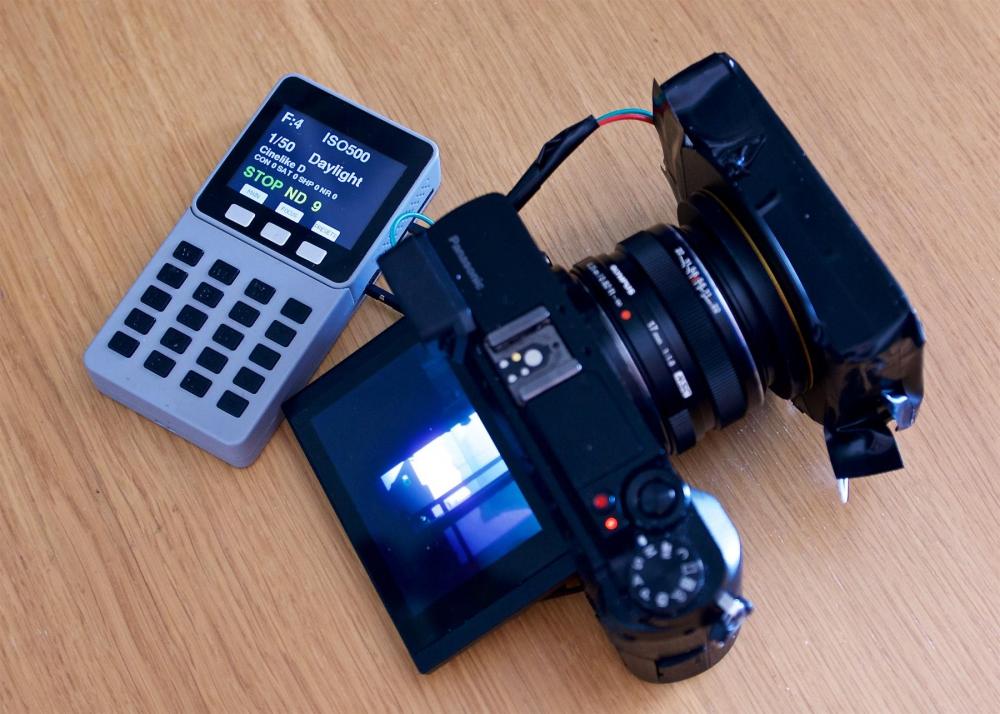
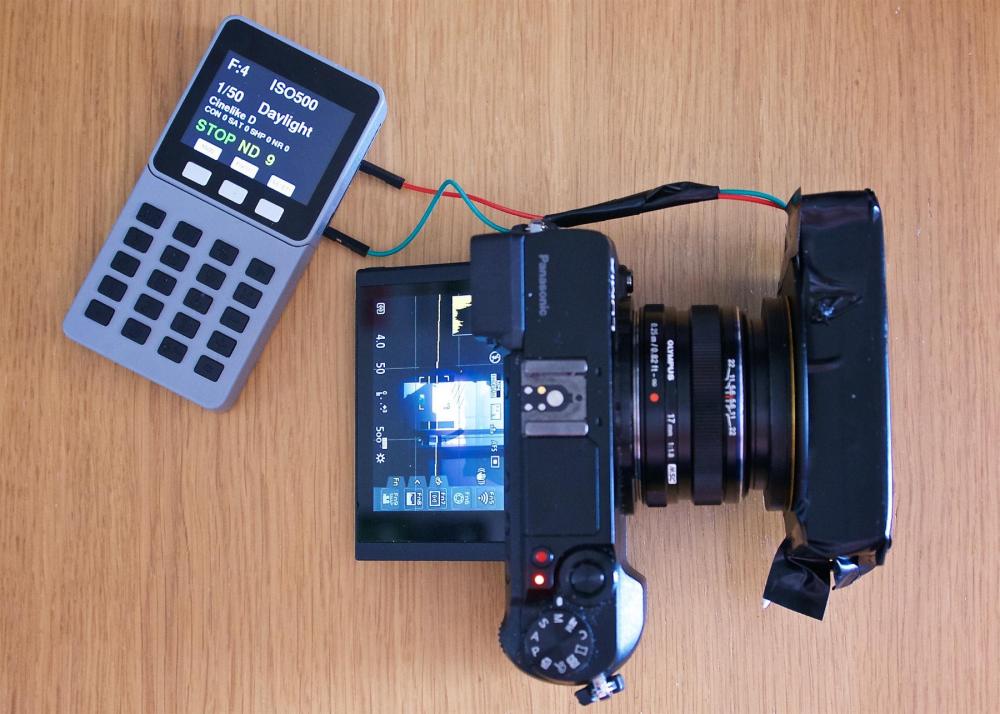






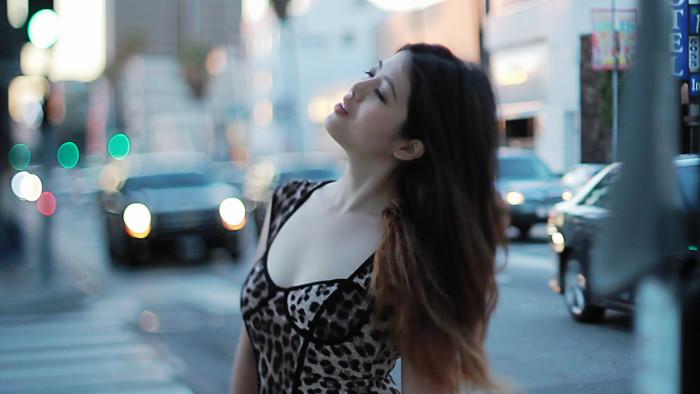
.thumb.jpg.0a83c14f598dfb7df085529aa288fa52.jpg)
